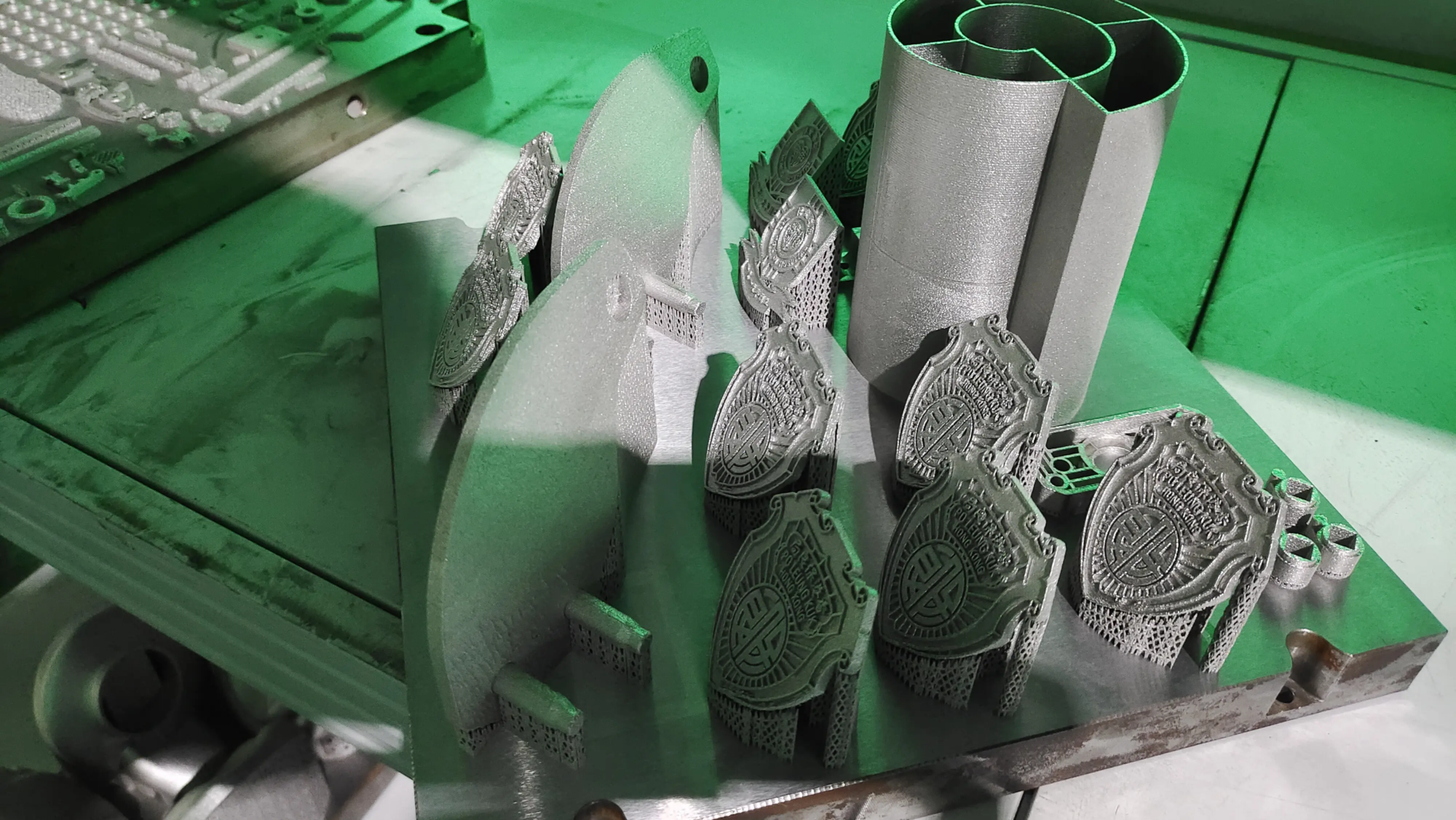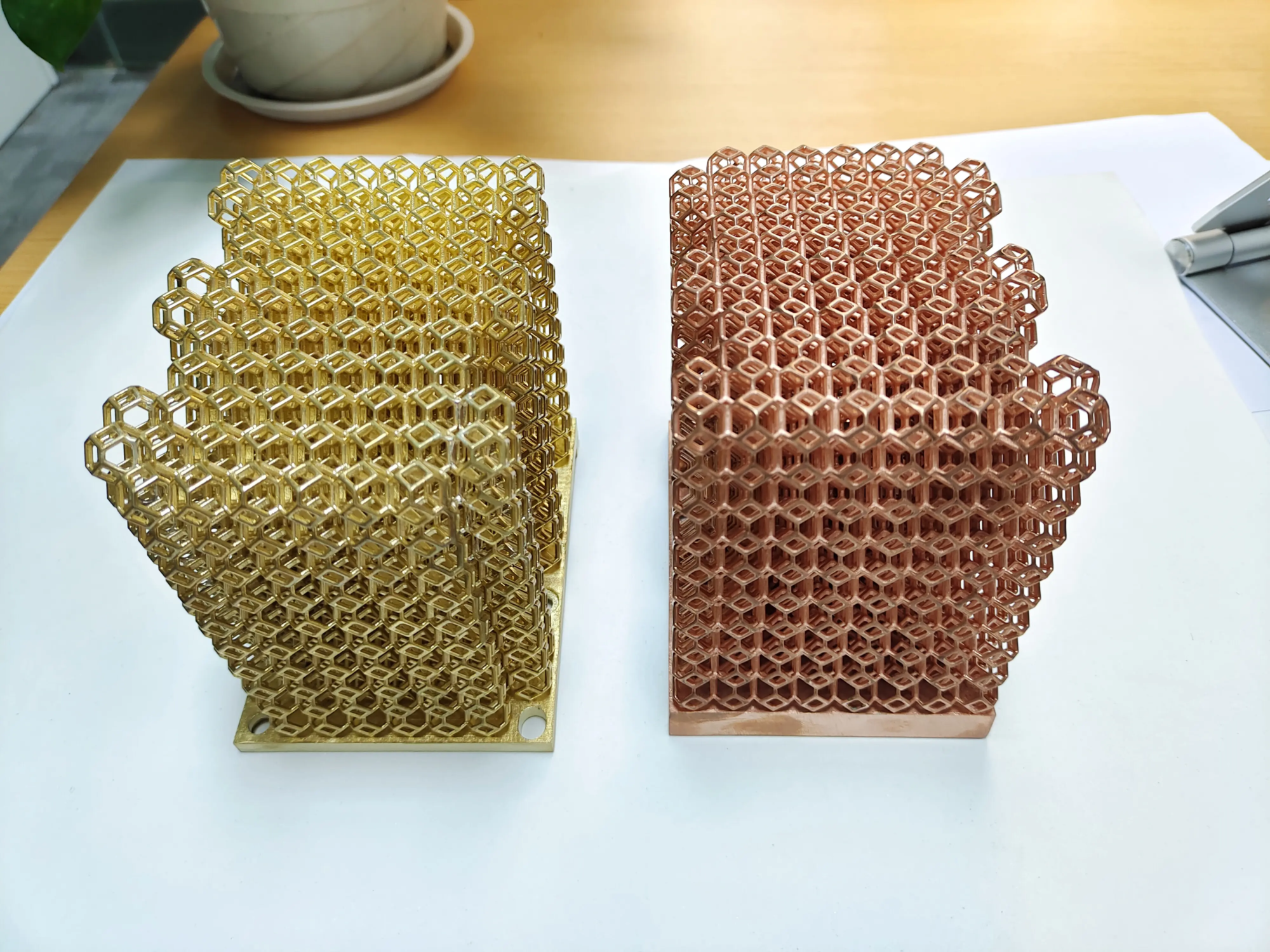Green Future Is Printed: How 3D Printing Can Completely Change Hydroponic Agriculture
Hydroponics – The art of growing plants without soil using nutrient-rich aqueous solutions is nothing new. From legendary Babylonian gardens to modern vertical farms, humans have long been seeking effective ways to grow crops. But today, a cutting-edge technology is injecting unprecedented precision, customization and efficiency into hydroponic systems: 3D printingspecial Metal 3D printing. It’s time to be real "Be smart."
Beyond Novelty: 3D printing as an advantageous technology
While Plastic 3D Printing (FDP/FDM, SLA) has entered the amateur hydroponics method for simple pots or brackets, the real game changer is reliable, sustainable and high-performance commercial and researched hydroponics technology. Metal additive manufacturing (AM)especially Selective laser melting (SLM). It has nothing to do with plastic trinkets; it’s about the environment for engineering excellence.
Why metal?
Hydroponic environmental requirements:
- Constant moisture: The ingredients are permanently exposed to water and nutrients, requiring corrosion resistance.
- Chemical exposure: Nutritional solutions can be chemically aggressive.
- Structural integrity: The system must support the weight of plants, water and usually complex structures.
- Precision flow: Nutrition and oxygen delivery require exact geometry to achieve optimal plant root conditions.
- health: Food safety is crucial and requires cleanable surfaces formed by biofilms.
Traditional manufacturing often struggles with optimizing the complexity and material requirements of hydroponic components. This is the best place for advanced metal 3D printing.
Unlocking Potential: Specific Hydroponic Applications for Metal 3D Printing
-
Ultra-optimized traffic components (core of the system):
- Custom manifold and distribution network: SLM can create complex internal channels in solid metal blocks. Designing fluid dynamics (CFD-optimized) pathways ensures a completely uniform nutrient flow in deep water cultures (DWC), nutrient membrane technology (NFT), or Aeroponics System. Eliminating dead zones and ensuring continuous delivery is critical to maximizing yields and preventing disease. Geometric complexity is free – vortex chambers, conical paths, optimized drip emitters are all possible.
- Nozzle and aerator (critical for air): Designed micron-scale precise nozzles that generate ideal droplet sizes in the root area for oxygen and nutrient absorption. Metal printing allows for wear-resistant, clog-resistant designs that are processed or molded on this scale. Create complex internal geometry that effectively atomizes water even at lower pressures, thus saving energy.
-
Advanced sensor integrated housing:
- Create a stylish, waterproof housing with integrated channels, mounts and seals, specially customized pH, EC (conductivity), temperature, DO (dissolved oxygen) and humidity sensors. Put cooling fins or thermal management functions directly into the design. Make sure the sensor is positioned optimally in the flow path for accurate readings.
-
Complex structural and functional elements:
- Comprehensive planting tower/raft: Design vertical agricultural towers with built-in nutritional passages, plant pods, sensor ports and structural reinforcements – all of which are printed as single complex or optimized components. Reduce fault points and assembly time.
- Lamp installation and radiator: Print out a strong, lightweight bracket that perfectly interfaces with LED arrays and combines cooling pathways that effectively manage heat and extend LED life.
- Root Zone Components: Customized pot clean racks, aeration collars or root support structures tailored to specific plant varieties.
- Rapid Prototyping and Iteration (Gremight Advantage):
- This is what the company likes Great True shine. Develop a new hydroponic system? From the CAD concept to the functional metal prototypes of days rather than weeks or months. Test complex geometric shapes that cannot be processed. Iterative fluid dynamics is cost-effective multiple times. Verify sensor placement. Optimize manufacturability before committing to mass production tools. This agility dramatically accelerates innovation and time to market.
Why companies turn to professional metal AM for hydroponics
- Unparalleled complexity: Design freely unlocks peak system performance with optimized fluid, aerodynamics and integrated functions.
- Excellent material properties: Utilize corrosion-resistant alloys 316L stainless steeltitanium or professional nickel alloys are ideal for harsh hydroponic environments. The achievement of strength and life span cannot match the plastic.
- Lightweight: Using lattice fillers and topological optimizations to reduce material use and weight while maintaining strength – critical to large shelf systems or transportation, thereby optimizing the structure.
- Quick customization and production on demand: Respond to specific crop needs, space constraints or research requirements without changing tools. Economically produce customized parts or small batches.
- Reduce assembly: Combine multiple parts into a single complex printed assembly to minimize seals, fasteners and potential leak points. Improve system reliability.
- Enhanced hygiene: A smooth (or easy-to-polish) interior surface that is easy to clean and disinfect, reducing biofilm risk compared to some rough or porous alternatives.
GRESTLIGHT: Your Hydroponic Engineering Excellence Partner
exist GreatWe understand the accuracy and reliability required for advanced agricultural technologies. As China’s leading Rapid Prototyping Company Specialized research Metal 3D printing Use the latest SLM technologyWe have a unique position in supporting the hydroponic revolution.
- Advanced SLM expertise: We utilize cutting-edge equipment and sophisticated production technology to deliver parts that meet the strict requirements of functional hydroponic systems.
- Material versatility: We provide various metal alloys suitable for hydroponics, mainly 316L stainless steel Due to its excellent corrosion resistance and food safety, the functionality extends to many custom materials.
- A true one-stop solution: In addition to printing, Great Provide comprehensive Post-processing and completion of services – Including precision machining (CNC), heat treatment, support removal, surface finishes (blasting, polishing – including highlight finishes that are critical to hygiene), passivation and coating – make sure your parts are ready to be integrated.
- Quick customization and speed: We excel at quickly turning your innovative designs into high-quality, functional prototypes and end-use parts. Effectively solve complex hydroponic engineering challenges.
- Cost-effective: For prototypes, small volume production and highly complex parts, metal AM often offers better total cost solutions than traditional methods due to reduced tooling and assembly costs.
Conclusion: Gradually cultivate the future, one layer
The hydroponics method of 3D printing, especially the use of powerful metal AM, represents a major leap in smart agriculture. Provides tangible advantages beyond simplicity novelty: unrivalled system optimization, improving resource efficiency (water, nutrients, space), improving crop yields, improving system reliability and accelerating innovation. The ability to rapidly prototype and generate complex, corrosion-resistant components that suit specific biological needs transforms our design and build systems that will feed the future.
This is not just manufacturing; it is a meticulous project to optimize the environment for life. By embracing this synergy between biology and advanced manufacturing – especially by partners who offer professional grade metal AM solutions Great – Growers, researchers and agtech companies can unlock unprecedented control, efficiency and productivity. Literally, the potential in lasers and metal powders is smart, and the seeds of more sustainable food futures are being cultivated. A truly intelligent, performance-driven hydroponic system (built on one layer in the era) is here. Grow smart, grow effectively, and develop to the future.
FAQ: 3D printing hydroponics
Question 1: Isn’t 3D printing of hydroponics just a decorative pot?
- one: Absolutely not! Despite the existence of basic plastic pots, the most variable applications involve Functional metal components At the core of the hydroponic system. Consider using CFD-designed internal channels, precision nozzles, integrated sensor housing and complex structural elements, think about optimized nutrition manifolds designed for performance and durability made with professional additives.
Q2: Can 3D printed metal parts be safe to grow food?
- one: Yes, production correctly Food grade materials and processes. 316L stainless steel Due to its excellent corrosion resistance and inertia, it is the industry standard for food contact. Reputable manufacturer (Just like Greatlight) Ensure that the parts are properly post-processed (e.g., polished, passivated) to achieve a smooth, cleanable surface that complies with hygienic standards that are essential for food safety.
Question 3: Are hydroponic systems cost-effective for metal 3D printing?
- A: For the correct part, yes. Traditional manufacturing (such as complex internal channels for CNC machining) can be expensive or impossible. Metal AM stands out on complex, lightweight and integrated parts, often degrading All Costs are made by eliminating multi-part components, tools and machining waste. It is ideal for custom design, prototypes, low-capacity production, and highly optimized performance parts, where ROI comes from system efficiency and yield improvements, not just about every part of the cost.
Question 4: What advantages does metal AM provide than plastic 3D printing hydroponics?
- one:
- Durability and lifespan: Metal parts (especially the SS316L) are more resistant to cracking, UV degradation, chemicals and general wear than plastics.
- Heat resistance: It is crucial for components close to growth lamps.
- Excellent structural strength: Enable load-bearing structures and components to handle pressure.
- Premium finish: Achieve smoother surfaces to enhance cleanability and reduce biofilm risk.
- Accuracy and stability: Metals maintain tighter tolerances under load and temperature compared to most plastics.
- Food Safety Compliance: Established food grade metal alloys provide easier regulatory avenues.
Q5: Can I print the entire hydroponic setup?
- one: While theoretically possible, it is usually not practical or optimal. 3D printing (especially metal AM) is best for Specific high-value components Where its design freedom and material properties have obvious advantages – such as custom manifolds, nozzles or brackets. Traditionally, tanks, larger tubes, planting media, pumps, lamps and controls are usually purchased. The power supply is to integrate printed parts into a cohesive, optimized system.
Question 6: How fast is the process of obtaining custom hydroponic parts?
- A: Professional rapid prototyping services (such as Greatlime) have greatly accelerated development. It is usually possible to twist complex metal parts that can take weeks in a few days. This speed allows for rapid design of iteration and testing cycles, which greatly shortens the path from concept to deployment compared to conventional manufacturing methods that require a large number of tools.
Question 7: Can you customize material properties based on specific hydroponic requirements?
- A: Yes, in the function of metal AM. although 316L SS is the default suggestion, manufacturer (Just like providing custom Greatlight) If a specific characteristic (such as enhanced corrosion resistance to highly acidic nutrients), it can be used with other alloys or a higher strength-to-weight ratio is required. Discussing your specific environmental challenges is key.
Question 8: The real complexity of design?
- one: The complexity of metal AM, especially SLM. Internal channels, lattices, organic shapes, fluid-optimized paths and integrated features Impossible or expensive It is usually printed directly to the machine. This is where the most significant performance breakthrough is achieved in hydroponic components. Designers are limited primarily by their imagination and simulation functions rather than manufacturing limitations.





